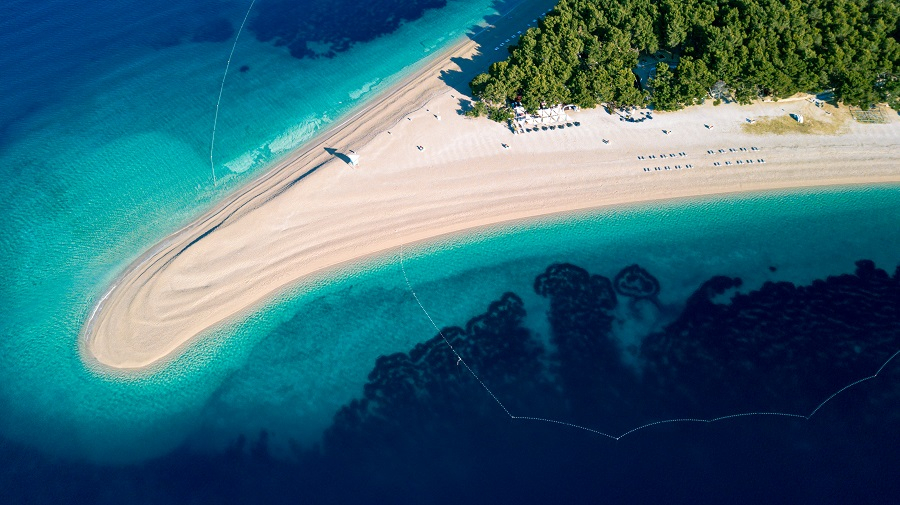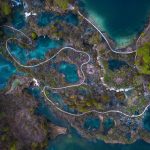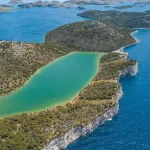Croatia: a year in the life/life in a year (and more)
Waiting in the cold outside a restaurant on Tomićeva in Zagreb, a server approaches, “sorry for the wait, here’s a couple shots of rakija to warm you up”.
In Bol, on Brac off the coast of Split, I off-handedly mention I love ljuti ajvar in the morning. The next morning, a knock on the door and a delivery of freshly baked bread and a jar of ajvar.
In Zagreb, a quick stop at a wine shop on Vlaška while waiting for (excellent) Thai takeaway turns into a complimentary full-blown tasting.
There are more moments, endlessly occurring over 15 sensational months spent in Croatia. From candid, pleasant morning conversations in Rovinj about how tourism has changed over the decades to moving memories, distant yet viscerally present, recounted in Vukovar about what’s changed and what hasn’t to charity dinners in Zagreb that change the landscape for those in Africa.
If a country’s riches lie in its people, Croatia is among the wealthiest nations I know.
People who are equal parts generous, welcoming and hospitable with a certain tenacity and stubbornness all the same. Salt of the earth with a brand of often bone dry humor that’s well appreciated and always well-timed.
The impossibility of paying for a coffee when meeting someone for the first time or when visiting a friend in their town was frustratingly endearing.
A country that’s famed for its tourism is nothing without its people. The finest coast is just where the sea meets the shore without the warmth of the people who share it with you and regale you with its stories.
Oh is the seaside breathlessly beautiful though.
And I managed to pack in a lot of coast.
From the truffle and wine-soaked decadence of Istria down to the dramatic and rugged (and also wine-soaked) Dalmatian coast with the towering Dinaric Alps (well, towering by Croatian standards anyway) as the backdrop.
If Dubrovnik is the Pearl of the Adriatic, Rovinj is undoubtedly one of its brightest gems. Pula’s truly stunning Roman amphitheater – among the best preserved on earth – defied all expectations. In a world of “must-sees”, Pula Arena is truly one of them.
Opatija to Rijeka is a mere 13 km drive yet they felt like entirely separate worlds.
Driving any stretch of the coast – though infinitely more time-consuming – was a treat with infinite islands melting into the horizon on one side and a steady stream of roadside cheese and honey stands on the other.
Discovering the coast’s “lesser” treasures was a joy too. If Zadar or Sibenik felt too packed, a short drive to Sukosan or Zaton gave you breathing room and almost a vacation from the vacationers.
Split, somewhere I first visited by cruise ship in 2014 became home for 4 months, something I still pinch myself about. After a month or so and the return of cruise ships, I lamented their arrival as much as the next person but took solace in the fact that they were there largely during fjaka hours. The bad of over-tourism was outweighed by the joy of early morning strolls in an empty, magnificently preserved Diocletian’s Palace. A quiet dip on the backside of Marjan was always a welcome respite from the masses at Bacvice.
I discovered sand beaches were for amateurs and that Hvar is so much more than Hvar Town.
The shower of beer at a brimming Zvončac park as Croatia took Spain to extra time in the Euros to the euphoria and pandemonium of a packed house at Poljud Stadium to watch Vatreni qualify for the World Cup are permanently etched in my mind.
And finally, Dubrovnik, what is there to write about it that hasn’t been written before? No matter what I muster, I’ll never manage the brevity of George Bernard Shaw who said, “those who seek paradise on Earth should come and see Dubrovnik”. Nailed it.
I occasionally came across folks up and down the Adriatic that clamored for the Caribbean and while on the one hand, I get it, the grass is always greener and all of that, on the other, there’s simply no competition. The Adriatic is superior in every way to the Caribbean.
Natural beauty clearly knows no bounds in this country; Telašćica, Kornati, Plitvice Lakes, Krka, Kopački Rit and Medvednica just to name a handful of the nature parks and national parks strewn about the land that I had the chance to see.
Gotta say I really loved the guy selling rakija and kuhano vino 3/4ths of the way up Sljeme.
The place that made me fall for Croatia though has nothing to do with those crystal clear, shimmering waters or natural wonders though. It was Zagreb. Formerly renowned as the place you have to fly to in order to get to the coast…Zagreb is now a destination in its own right with digital nomads, expats and tourists alike discovering the charms and beauty of the underappreciated capital.
After 60-odd countries and hundreds of cities, Zagreb easily lands in my top 5 favorite places. The view from the lookout point atop Strossmayerovo šetalište remains the lock screen image on my phone, something I happily see a dozen or so times a day.
The lost in translation back and forths at the markets that dot the town, the scores of quality bars – the funky to the Swanky to the traditional – to lose yourself in conversation in, the seemingly perpetual events that bring a dozen people to the pub, thousands out to a nighttime race or hundreds of thousands out for Advent and the Festival of Lights. It’s a city for all seasons I found.
Will everyone agree? No. And that’s fine, that’s part of the charm in fact, but like a fine wine, Zagreb only gets better with time.
North, south, east and west, all corners of Croatia surprised me, none more so than what lies east of Zagreb. Not because it’s “better” but because it’s largely undiscovered.
Perhaps forgotten is a more appropriate way to describe Slavonia though.
People flock to the sea like moths to the flame but getting anyone out to the unexplored east seems akin to pulling teeth.
And that’s a shame because it’s a wholly different country. Forgotten yet resilient. History that’s ever-present while also stretching back 3,000 BCE to early Indo-European civilization and home to, without a doubt, the nicest people in the country. A high bar in a country chock full of wonderful people, hordes of whom show their support for far-flung Vukovar yearly, in a somber, yet somehow uplifting procession.
There’s a quiet allure to the rolling hills and the patchwork of vineyards and farms out east. A certain beauty in the calm along the rivers that traverse Slavonia and Baranja. Awe at the unexpected cathedrals in Djakovo and Aljmas.
Complement that with rich, hearty cuisine to match the rich, hearty people in places like Baranjska kuća in Karanac or Etno kuća Stari Dud in Erdut and you’ve got a real experience.
No matter how many times I tried to order water at a lunch in Djakovo (three), I got wine.
Do I really need to mention the wine again? From Belje to Zmajevac to Ilok, the wines were nothing short of exceptional. The pairing with poderane gaće and cheese at Ilocki Podrumi being particularly special.
That said, it’s not all roses.
There’s a distinct sadness that you felt passing through the decaying towns outside of still vibrant Osijek and Vinkovci. The difficult to shake pall that continues to shroud Vukovar despite its gorgeous location on the Danube and passionate citizens.
Zagreb remains under construction from an earthquake that happened over 2 years ago. The “iconic” building on the corner Đorđićeva and Petrinjska street only being torn down days before I left and exactly 1 year and 363 days after it was rendered unlivable.
Petrinja remains essentially in ruins.
The infamous bureaucracy can turn the most basic of tasks into a multi-day ordeal.
Continued emigration means the country has shrunk by nearly 10% in the last decade. While the brain drain is real, the brains that stayed – and the brains that have immigrated – are at the forefront of creating something special.
Despite the difficulties, stubborn progress is progress no less and the entrepreneurs, creatives and forward-thinking people I had the pleasure of meeting over my time in Croatia, both homegrown and from abroad, were working miracles showing what’s possible in a country that doesn’t necessarily make it easy right now. From coffee roasters to gin distillers, drone equipment makers to email marketers, ideas are flourishing and success stories aren’t quite so rare. All of them, plus a unicorn in Vodnjan and a supercar maker in Sveta Nedelja, hopefully inspiring some in the next generation to stay and build at home.
In terms of the pandemic-induced turmoil of the last couple of years, I don’t think there was a better place on earth to be than Croatia. Reading news from the States and elsewhere, I felt like I was on another planet entirely over in Hrvatska. By comparison, life was…normal.
15 months of it.
Nearly 40 cities and towns.
Countless people along the way.
If life is meant to be truly lived, I found that Croatia is among the very best places to live it.
Looking forward to coming back and having a proper coffee. And a spot of travarica.

Join Steve on a tour of eastern Croatia in the video below.
How many places do you recognise?
For more news and features about digital nomads in Croatia, follow the dedicated TCN section.











